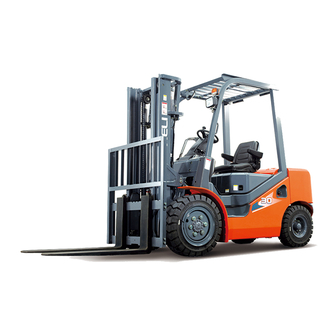
HELI G3 Series Operation & Service Manual
Internal combustion counterbalanced forklift truck(standard) 2-3.5t
Hide thumbs
Also See for G3 Series:
- Operation & maintenance manual (179 pages) ,
- Operation & service manual (162 pages) ,
- Operation & service manual (97 pages)

















Need help?
Do you have a question about the G3 Series and is the answer not in the manual?
Questions and answers
как правильно проверить уровень масла в коробке автомат heli cpcd 35
To correctly check the oil level in the automatic transmission of the HELI CPCD 35 G3 Series:
1. Wipe off the hydraulic oil on the dipstick with a clean rag.
2. Insert the dipstick into the fuel tank fully.
3. Pull out the dipstick and check the oil level.
4. Ensure the oil level is between the "H" (high) and "L" (low) marks on the correct side of the dipstick:
- Use side A if the lifting height is below 4700mm and there are no accessories.
- Use side B for all other cases.
5. If the oil level is low, add Heli's pure or recommended hydraulic oil.
6. Wipe off any spilled oil.
This answer is automatically generated